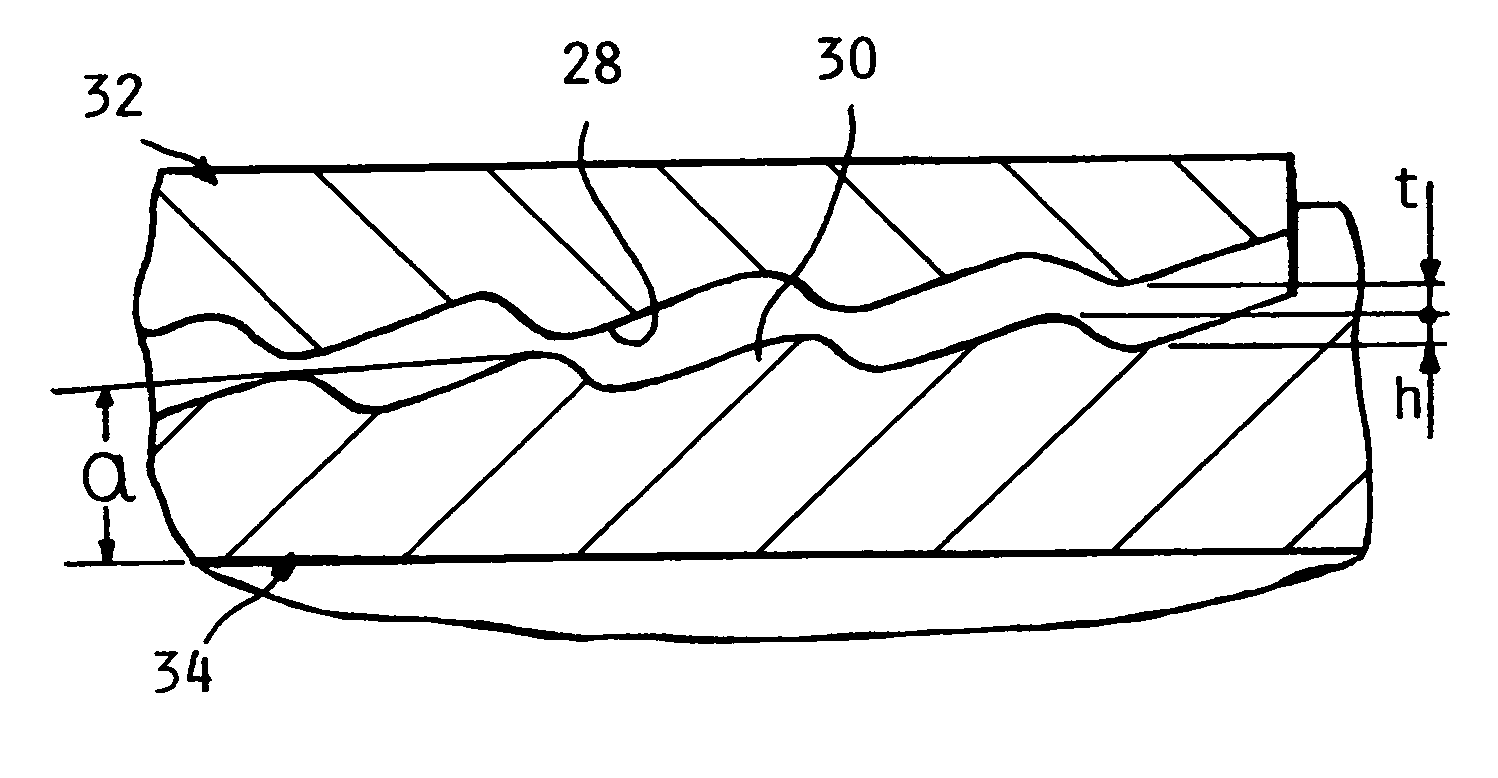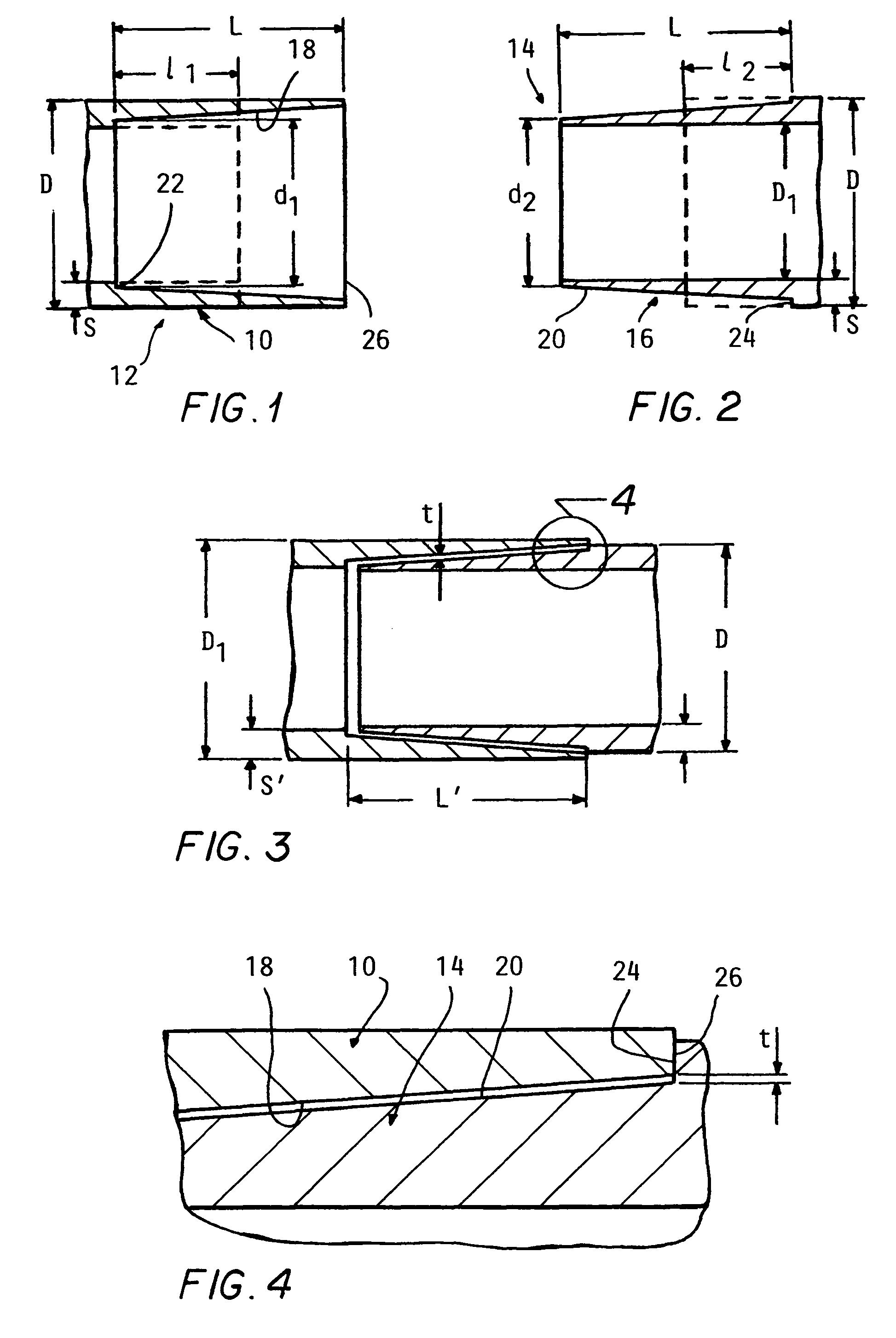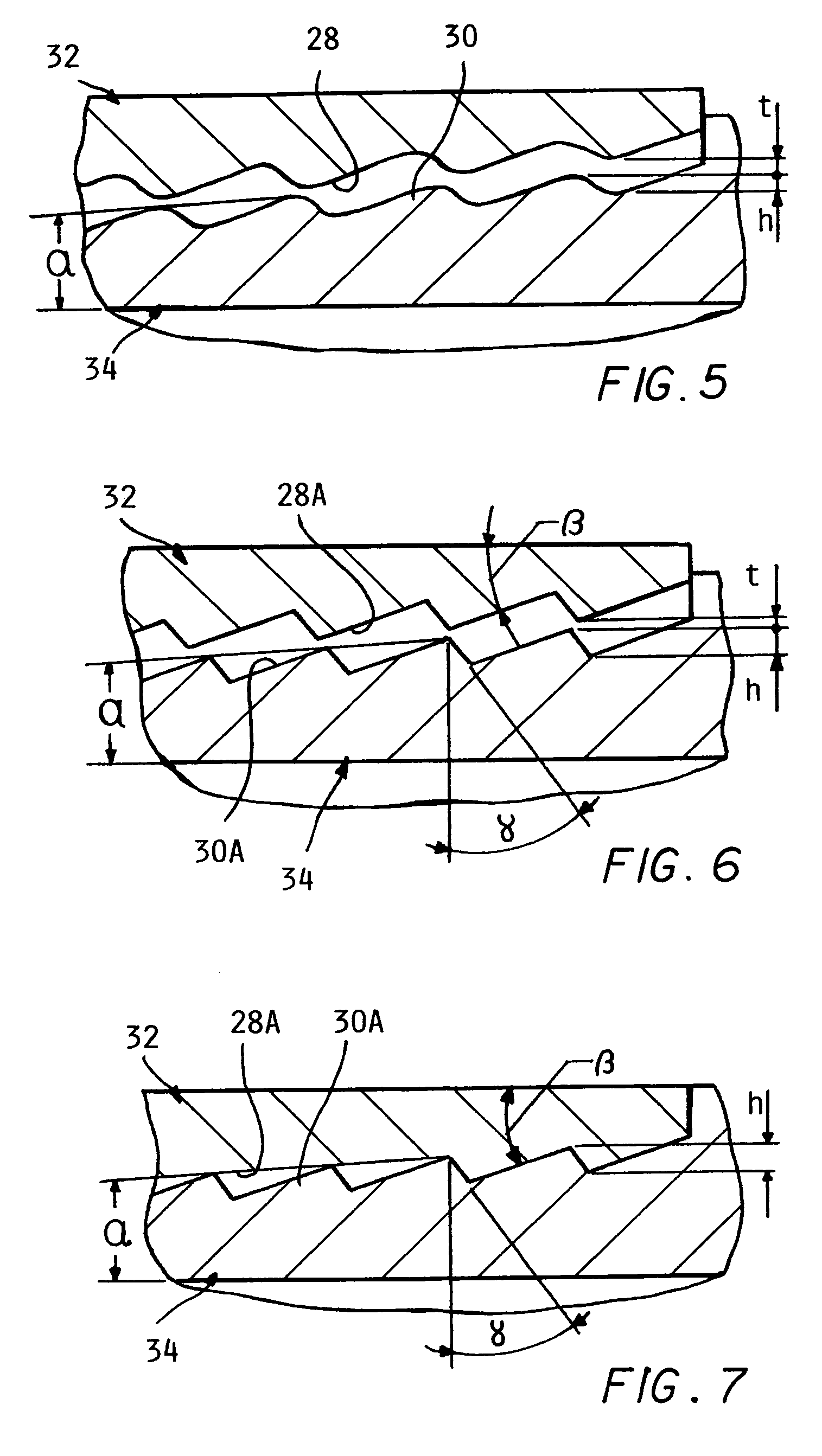Method for joining ends of sections of pipe
a technology of pipe ends and pipe ends, which is applied in the direction of hose connection, pipe heating/cooling, manufacturing tools, etc., can solve the problems of difficult expansion of pipe ends in order to increase the internal diameter of the pipe, limited to connecting pipes of different diameters, and difficult to expand the pipe in order to achieve good matching and prevent separation
- Summary
- Abstract
- Description
- Claims
- Application Information
AI Technical Summary
Benefits of technology
Problems solved by technology
Method used
Image
Examples
Embodiment Construction
[0039]In the following detailed description, certain specific terminology will be employed for the sake of clarity and a particular embodiment described in accordance with the requirements of 35 USC 112, but it is to be understood that the same is not intended to be limiting and should not be so construed inasmuch as the invention is capable of taking many forms and variations within the scope of the appended claims.
[0040]Referring to the drawings and particularly FIGS. 1-4, the inside diameter of one pipe end 10 of one pipe section 12 (FIG. 1) is formed over a length l1 into a female pipe end preferably having a tapered shape extending a length L. The outside diameter of an end 14 of another section of pipe 16 (FIG. 2) is formed along its O.D. over length l2 as by cold rolling to form a male pipe end with a preferably tapered shape 20, extending along the length L, these shapes defining complementary mating surfaces. The tapered shapes facilitates assembly of the ends and increases...
PUM
| Property | Measurement | Unit |
|---|---|---|
| surface angle | aaaaa | aaaaa |
| angle | aaaaa | aaaaa |
| angle | aaaaa | aaaaa |
Abstract
Description
Claims
Application Information
 Login to View More
Login to View More - R&D
- Intellectual Property
- Life Sciences
- Materials
- Tech Scout
- Unparalleled Data Quality
- Higher Quality Content
- 60% Fewer Hallucinations
Browse by: Latest US Patents, China's latest patents, Technical Efficacy Thesaurus, Application Domain, Technology Topic, Popular Technical Reports.
© 2025 PatSnap. All rights reserved.Legal|Privacy policy|Modern Slavery Act Transparency Statement|Sitemap|About US| Contact US: help@patsnap.com



